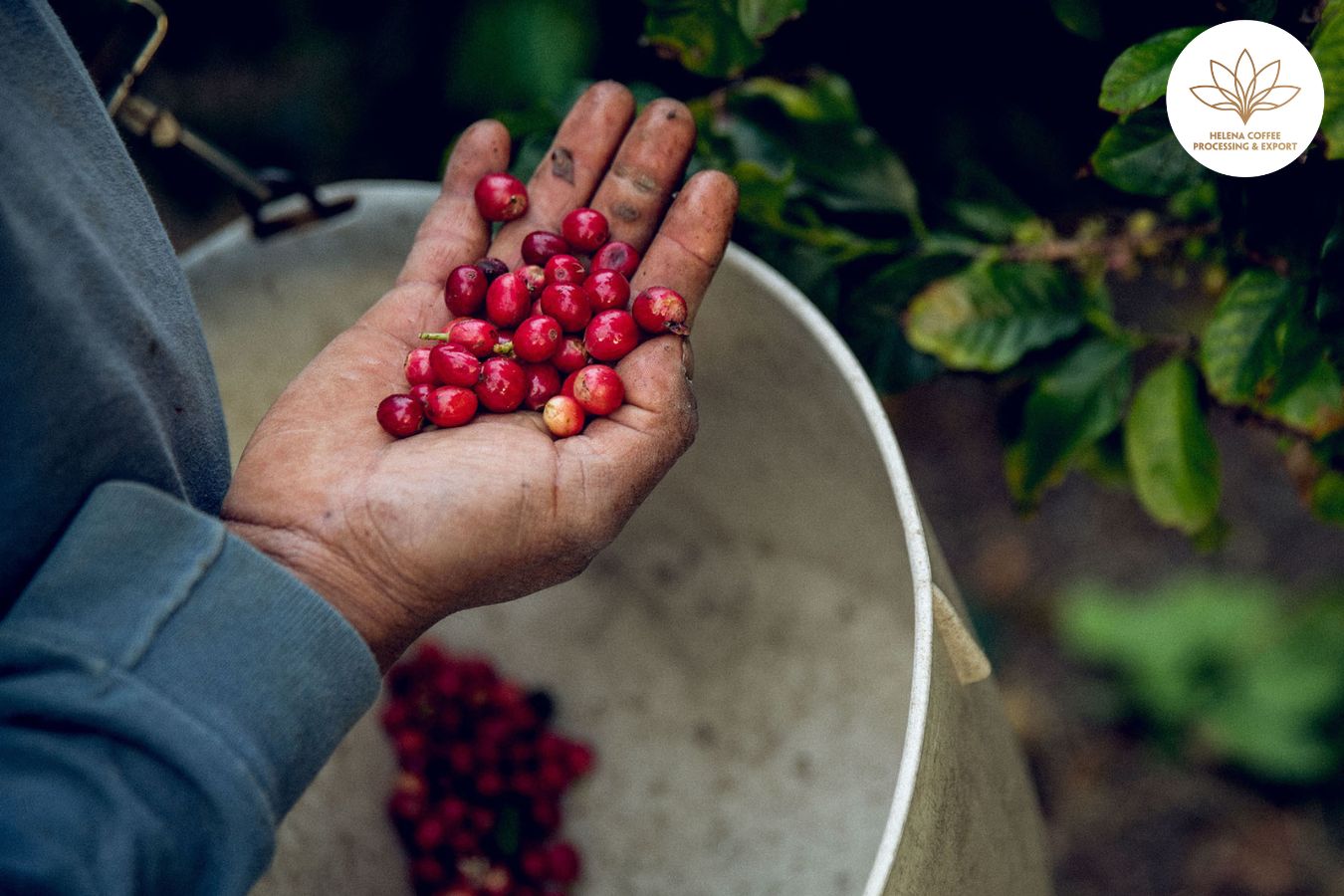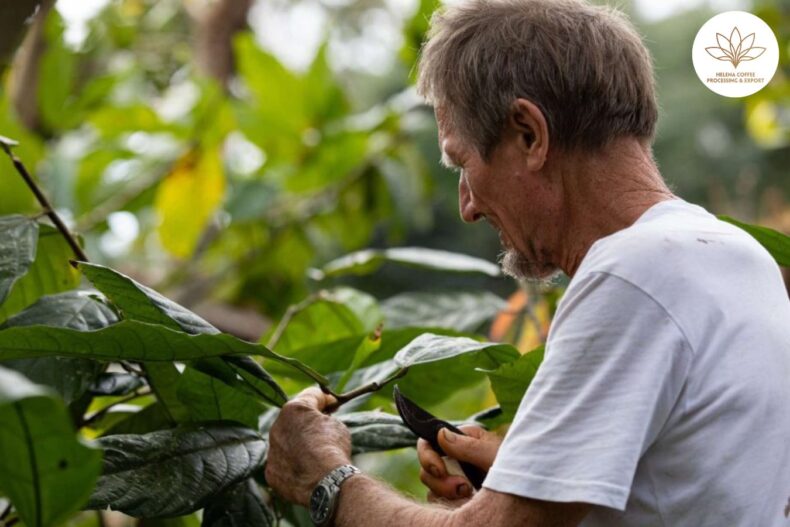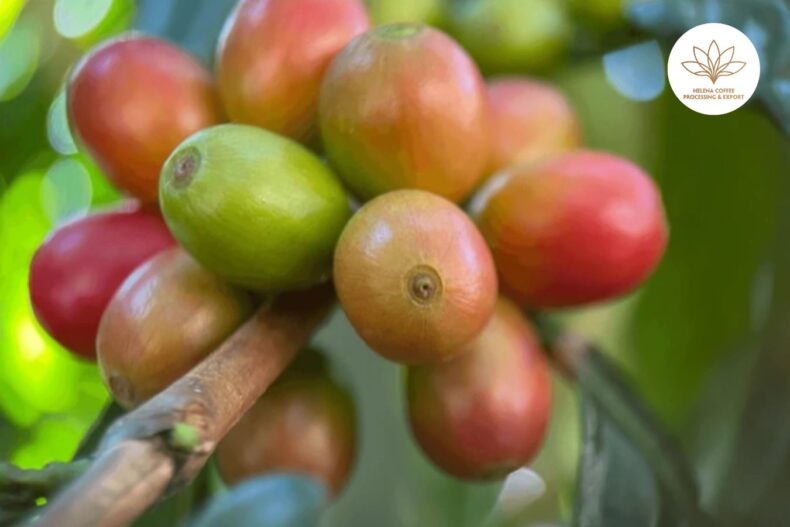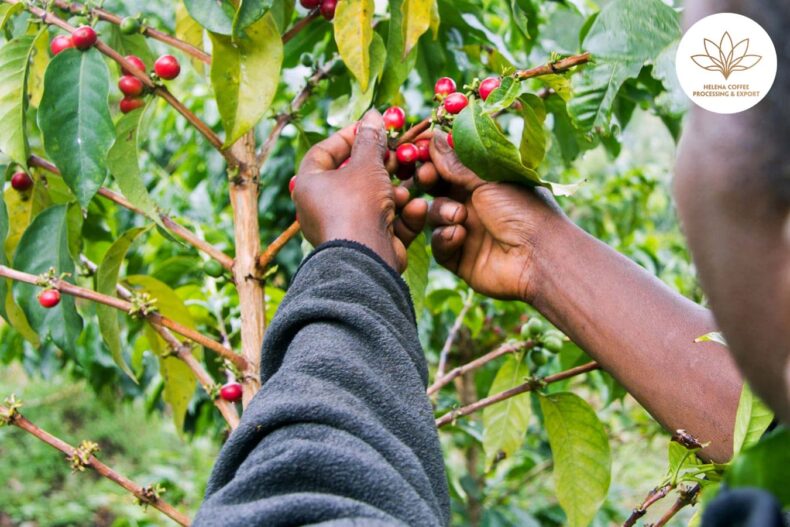
Ideal areas for coffee cultivation: Recently, international government organizations and meteorological organizations have announced new historical records in the temperature record around different indicators. The environmental imbalance is not limited to high temperatures, but brings with it climatic phenomena that affect the quality of life of many people and that tend to worsen year after year.
Coffee, as an agricultural product, is directly conditioned by the environment and is characterized by having very specific requirements for its proper development. If a region eventually loses the conditions that make it optimal for coffee cultivation , it will be necessary to look for solutions or alternatives to adapt or relocate the production process.
In order to learn more about this topic, I spoke with two researchers focused on the adaptation of coffee production to climate change. Continue reading and discover what actions can be implemented to address this problem.
How is the reduction in the productive capacity of coffee-growing areas projected?
Federico Ceballos Sierra is an agronomist and doctor in agricultural and applied economics. In recent years, he has dedicated himself to researching the effects of climate change within the coffee industry .
Based on his studies, and those of his colleagues, he affirms that changes are being generated in the suitability of regions destined for coffee cultivation. This relocation of the most productive areas is generated as a result of the direct and indirect effects of climate change.
Among the direct effects are the increase in temperatures, changes in water regimes and water availability. Among the indirect effects is the incidence of pests and diseases.
According to Federico, as a consequence, Arabica cultivation will have to shift to higher altitudes if the same levels of volume and quality are to be maintained.
Diana Carolina Meza Sepulveda is a researcher and teacher at the Technological University of Pereira (UTP) in the faculty of agricultural sciences and agroindustry, and a doctoral student in biotechnology. She is also co-director of Clima y Café, a non-profit social project that has a team of collaborators trained in different disciplines but united by the same focus: the experience of Colombian coffee growers with climate change.
Diana affirms that it is no longer just about ensuring the future of coffee and other crops, but that climate change and its effects are part of the present . She, in turn, clarifies that some regions are more affected than others.
The changes are already visible
To give a clear example, Diana mentions that there is currently a delay in the coffee harvesting process in Colombia due to a delay in the flowering of coffee trees due to environmental causes, such as excessive rain.
“At this moment there are many planting areas that, unfortunately, although they produce coffee, it is no longer in the same quantities.”
According to Diana, the regions most affected by climate change not only produce less volume, but the quality tends to decrease and they must deal with a greater presence of pests and diseases, so the losses are greater.
In early 2022, a study was published in the journal PLOS One that analyzes how the growing conditions of three foods (coffee, cashews and avocados) will change by 2050. According to the study, of the three foods analyzed, coffee cultivation It is the most susceptible to climate change in productive terms.
Potential emerging regions for coffee cultivation
“Probably, in the future there will be areas that are not suitable at the moment but that climate change will make them so,” explains Federico. He gives as an example his father’s farm, which is located at 1900 m asl, an elevation historically considered a high marginal coffee area but which, today, is becoming a more productive area. In turn, old areas of high productivity and lower elevation are on the way to being considered marginal areas of low productivity.
“I think we should talk about topography in the case of tropical countries. There we would be seeing where the expansion potential is.”
The study mentioned above talks about emerging regions for coffee cultivation from altitude and latitude. It is estimated that those areas that border to the south and north with currently producing regions can benefit from climate change and become suitable for coffee cultivation due to the increase in minimum temperatures in the coldest month.
In this way, regions such as southern Brazil, Uruguay, northern Argentina , Chile, the United States, West Africa, South Africa, China, India and New Zealand can potentially enter the productive market or improve and expand their production, in the case of the regions that already have some activity.
According to Federico, this latitudinal movement can be restricted by more intense climate shocks, such as frost. Some areas may meet minimum temperatures throughout the year but this does not guarantee the region’s suitability for coffee cultivation.
Should production be projected from now on?
Federico maintains that those producers located in low areas will be the most affected by climate change. Therefore, it is important to focus on adaptation and efforts to mitigate losses. Transitioning to crops suitable for higher temperatures may be an option but this requires training and may involve loss of human capital.
On the other hand, those located in high areas may even benefit from climate change. Therefore, they must be integrated into the productive system through the Rural Extension Service, purchase guarantees and other resources and tools that can help them carry out their activity without collateral damage.
Diana says that Clima y Café proposes some adaptation strategies for producers that should be reevaluated depending on the case. “The strategies are very specific to each productive unit. I think the first mistake is to try to massify and say that this works for everyone.”
According to her, crop diversification is necessary because it is very risky to bet everything on the same product. Also, she considers it important to guarantee food security: “we can have, for example, orchards and start generating different activities without separating ourselves from coffee.”
What is the impact of this displacement on producing countries and international markets?
The main coffee producers globally are Brazil, Vietnam, Colombia and Indonesia. These four countries concentrate 64% of world coffee production; However, it is estimated that by 2050 this number could be drastically reduced.
Federico points out that the frost in Brazil in 2021 demonstrated the volatility of the market in the face of climate phenomena by generating massive losses and a rise in the price of coffee. As a consequence, many have migrated to the Robusta coffee market, due to its greater resilience and, in theory, lower price.
On the other hand, the exit of coffee growers from this activity can generate a problem for local economies if an adequate transition is not carried out. Diana affirms that many producers in Colombia have found the production of specialty coffees to be a more profitable business. “We are turning, for example, to Bourbones, Geishas and certain varieties of coffee with economically important characteristics.”
This trend can be seen in the proliferation of specialty coffee shops , some of them developed by producers seeking to sell their product with added value in the domestic market.
Transitioning to ideal areas for coffee cultivation within producing countries
Diana says that since many of the producers are small and medium scale, it is not feasible to make a transition to more suitable growing areas. Mainly, due to the demand for resources that this would imply.
For his part, Federico explains that despite representing a challenge and high cost, coffee production, in the case of Colombia, can be relocated to higher elevation areas. On the contrary, many Central American countries do not have this option even if they have the necessary economic resources.
In this sense, it is clear that the limitations to adapting coffee cultivation to climate change are not only economic or logistical but also topographical.
Is it possible to mitigate this problem?
For starters, Federico says coffee supply chains are fragile. Consumer countries have tenuous contact and low penetration at origin, which translates into little capacity to effect change. “If we are talking about coffee growing as it is now, I think the risk profile is appreciably high.”
Additionally, he explains that most producers are willing to adapt to climate change, as long as the cost is justified. “Eventually, who leaves the production is because the cost of these adaptations exceeds their returns or profits.”
In any case, adaptation does not depend exclusively on the producer. Many research centers are carrying out studies on species with similar cup characteristics to Arabica but less susceptible to climate change.
In this context, it is not only about making discoveries or advances in research centers. It is necessary to strengthen the transfer schemes for this technology so that it has a real impact on coffee growing. For example, Diana highlights the importance of extension workers in Colombia, specialists who go to the productive units and provide support to the producers.
Given the effects of a change that are already beginning to be felt, it is vital that organizations develop as soon as possible an action plan that can be implemented in different spheres and scales, with short, medium and long-term objectives.
The contemplation and coordination of all links will pave the way to meet these goals and strengthen supply chains in the face of the challenge posed by the displacement of ideal areas for coffee cultivation.
FAQs:


